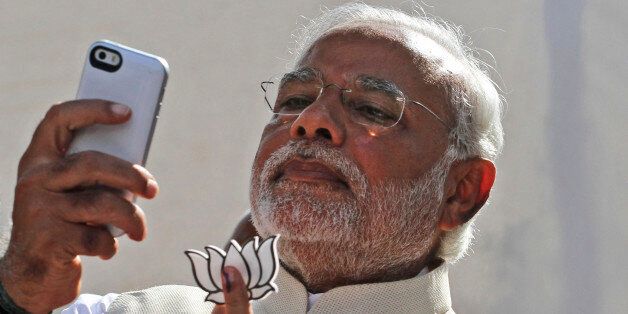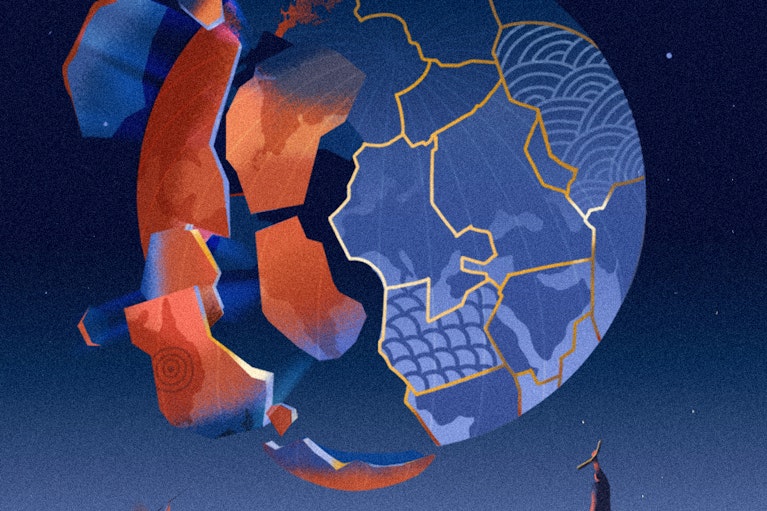This week, Modi returns to the U.S. — almost exactly a year since his nearly 20,000-strong crowd at Madison Square Garden generated media madness in India and abroad. Modi’s diaspora audiences have continued to throng to hear him: 16,000 in Australia and some 50,000 in Dubai. So, is this “Madison Square Garden Part 2?” Not really.
The prime minister’s two-day segment in San Jose following a speech at the United Nations in New York reflects Modi’s definitive push of his “Digital India” and “Startup India” initiatives, messaging that appeals to multiple constituencies beyond just the players in the digital economy to include young educated Indian diaspora folks for whom many of Modi’s announced initiatives trigger a diasporic “pride India,” even if their everyday lives remain broadly unaffected by the status of U.S.-India relations.
In 2014, the hook for Modi’s visit was his address at the UN General Assembly — his first as Indian prime minister. New York and Washington were his only stops. This time, the two-day segment in California is significant for several reasons. First, in stretching the spatial frame to the West Coast, Modi becomes the first Indian prime minister to visit California in more than three decades. California is home to the largest segment of the 3-million strong Indian diaspora in the U.S.. Historically, Indian Punjabis, mostly agriculturalists were the earliest immigrants to the U.S.. Their descendants continue to own sprawling businesses in Californian almonds, peaches and other produce in the Central Valley. The oldest existing Sikh gurdwara in America in Stockton — dating back to 1912 — bears testimony to those roots. Interestingly, two of the very few Indian-American congressmen in history, Dalip Singh Saund and Ami Bera, are both Californians!
Modi’s initiatives trigger a “pride India” for many young educated Indian diaspora folks, even if their everyday lives remain broadly unaffected by the status of U.S.-India relations.
However, this visit by the Indian prime minister has a different messaging. After all, unlike New York, New Jersey and Chicago, San Jose was not always a traditional Indian diaspora hub. It has become one since the IT boom that has attracted many Indian tech professionals. Today, San Jose is a buzzing space for innovation and fast-paced shifts in the digital space.
When I visited the capital of Silicon Valley in August, two things struck me. San Jose is a non-glitzy city. Equally, while walking around South Market St. and Park Ave., I was struck by a large presence of university students hanging out at the local eateries and bars. I spoke to a few and learned from Mark (from MIT) and Megan (from Ann Arbor) that summer internships around San Jose draw from among the best young tech minds. Adobe headquarters are in the heart of San Jose; Facebook’s Menlo Park campus is about a 30 minute drive and Google’s facilities are scattered within a similar radius. Palo Alto (Stanford) is in the vicinity, as is Apple’s Cupertino campus. So, this is the happening incubation space for startups, where young techies create hundreds of apps each week!
Modi’s programs at San Jose then, mesh well with his “Startup India, Stand Up India” message pushing India towards a digital economy while pursuing clean energy. In San Jose, Modi will launch “India-U.S. Startup Konnect,” an extension of “10,000 Startups,” an ambitious India-based project which aims to scale up the startup ecosystem in India by 10 times. In San Jose, Konnect will showcase India’s strengths in the startup space across sectors, including healthcare, agriculture, energy and biotech to generate synergies between Indian and U.S. startups. But how does that messaging gel with the diaspora? Interviews with several U.S.-born Indian-American professionals and business owners in the Bay Area revealed that many are Modi-watchers, even if infrequent visitors to India.
Rohit, 31, a graduate from Irvine and a Fremont-based business owner, expressed it best:
As kids we did annual India visits to Delhi and Chandigarh, mostly meeting extended family and grandparents. Over time, family visits tapered off. . . India receded from our active consciousness. But this last decade, India is back in the conversations of my generation of ‘desis‘. . . Strong India-U.S. relations, visits by Indian PM and the Obama’s India visits have brought us some great press in the U.S..
Neha, 30, an educator, nuanced Rohit’s remarks, saying:
Of course we don’t follow Indian events daily. . . So, media coverage that reaches us ranges from Indian success in tech to the disturbing statistics about women’s basic safety in India’s cities.
Shruti, 28, a tech professional, remarked:
Modi’s election stirred us all up. His ‘Clean India’ campaign is phenomenal and ‘Digital India’ initiatives sound great to my generation.
I asked Harry, 32, a Berkeley graduate, now working with his engineer father in a defense equipment business whether U.S.-India relations mattered to him:
Of course! It’s about pride. . . In the early ‘70s, when my father came from India all that the LA Times reported was about the underbelly of India. That is still there, but there is so much more now. The Obama-Modi meetings and strong U.S.-India ties are a win-win.
Evidently, for many diaspora Indians, the messaging from the Indian prime minister is important. Their awareness of domestic Indian politics is limited and current issues in India like the Patel agitation or the GST bill may not appear on their radars. But, if “Clean India” and “Digital India” carry such appeal, then San Jose seems an appropriate choice for Modi this time. The Google visit and the Modi-Zuckerberg townhall should have a similar impact considering that when Zuckerberg invited questions from Facebook users, over 22,000 comments popped up in less than 12 hours. Of course, for Facebook and Google, this is good optics, too. Their Indian constituency runs into the millions. Facebook users from India are slated to top user amounts globally by 2017. And, numbers matter.
For many diaspora Indians, the messaging from the Indian prime minister is important.
But what about the big-splash community event on Sept. 27 at the SAP Center? Well, the first 24 hours saw over 10,000 online registrations. Requests are still pouring in with thousands waitlisted. This, of course, does not include the CEOs, venture capitalists or the political luminaries who will fly into San Jose to attend various exclusive events alongside American senators, congressmen and other movers and shakers.
Hundreds of Indian-American networks have committed time and effort over months for the free community event. Many like Vijay and Swati are excited: “We missed New York, but we won’t miss San Jose!’ It is unlikely that San Jose will surpass Madison Square Garden in the numbers game, but in the digital game, it just may well.





